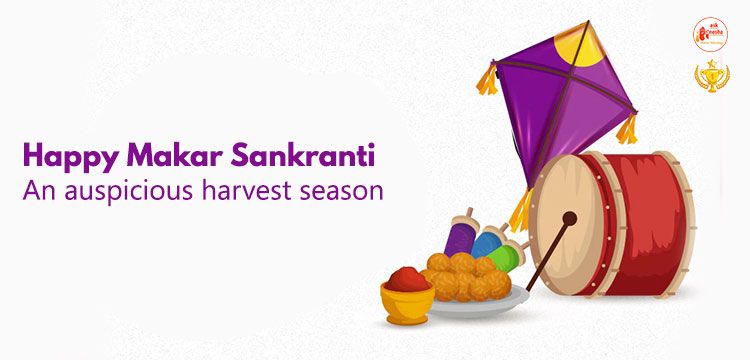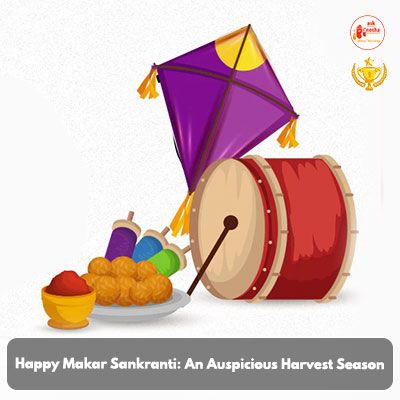Makar Sankranti is a solar event, not a lunar event. It marks the movement of the Sun into the Capricorn zodiac constellation. Since the Gregorian calendar is based on the tropical year, not the sidereal year, the date of Happy Makar Sankranti also keeps moving, but over a large number of years. As per Hindu calendar, a full year consists of total 12 Sankranti, in which Makar Sankranti holds the holiest importance. In Hinduism, the festival of Makar Sankranti is specified as the transition of Lord Sun in the zodiac sign Makar which is commonly known as Capricorn. This festival is celebrated as the first change in season during midwinter. 
The mythical story behind Makar Sankranti
It is also believed that on this day Lord Sun visited his son Lord Saturn but they did not get along well. So makar-Sankranti is a day when people start a new beginning and forget all the negativity. It is also believed that who so ever dies on this day gets Moksha. In the Mahabharata, Bhishm Pitamah also chose this day to leave his body and go to heaven. It is also believed that on the day of Makar Sankranti River Ganga followed Bhagirath and came to the earth.  How Happy Makar Sankranti is celebrated? Makar Sankranti is a devoted and dedicated celebration to the Sun God or Surya. Many people also take a dip in the holy waters of Ganga to honor the auspicious festival. In India, there are many names for Makar Sankranti, such as Poush Sankranti in West Bengal, Maghi in Himachal Pradesh, Bihu in Assam and Pongal in Tamil Nadu. In several parts in India, this is the prime time to harvest Rabi crops. In northern parts of India such as Punjab, this is the time when the farmers get ready for the seeds they had sown to grow into crops and give them business. The first crop of this season is worshipped along with other delectable such as rewari and popcorn. People of the community come together and sing songs and dance around the bonfire.
How Happy Makar Sankranti is celebrated? Makar Sankranti is a devoted and dedicated celebration to the Sun God or Surya. Many people also take a dip in the holy waters of Ganga to honor the auspicious festival. In India, there are many names for Makar Sankranti, such as Poush Sankranti in West Bengal, Maghi in Himachal Pradesh, Bihu in Assam and Pongal in Tamil Nadu. In several parts in India, this is the prime time to harvest Rabi crops. In northern parts of India such as Punjab, this is the time when the farmers get ready for the seeds they had sown to grow into crops and give them business. The first crop of this season is worshipped along with other delectable such as rewari and popcorn. People of the community come together and sing songs and dance around the bonfire. 
Regional Significance of Happy Makar Sankranti
In Uttar Pradesh, Sankranti is called 'Khichiri'. If one is taking a dip in the holy rivers on this day, it is regarded as very auspicious. A big 1 month long 'Magha-Mela' fair begins at Prayag (Allahabad) on this occasion. Apart from Triveni ghat, ritual bathing also happens at other places like Haridwar and Garh Mukteshwar in Uttar Pradesh, and Patna in Bihar. In Bengal every year, there is a very big Mela which is held at Ganga Sagar where the river Ganga is believed to have dived into the northern region and vivified the ashes of the 60,000 ancestors of King Bhagirath. In Maharashtra on the Sankranti day, people usually exchange the multi-colored til-guds made from til (sesame seeds) and sugar and til-laddus made from til and jaggery. In Gujarat, there is a tradition of giving gifts to all the family relatives. The Gujarati Pandits on this auspicious day grant scholarships to students for higher studies in philosophy and astrology. Kite flying is associated with this festival in a very big way. It has also become an internationally well-known event marking this day. On this day Lord Sun is worshiped and chanting the Surya mantra and performing Surya Puja is beneficial. Team Askganesha wishes you all a very Happy Makar Sankranti.
















 Translate
Translate